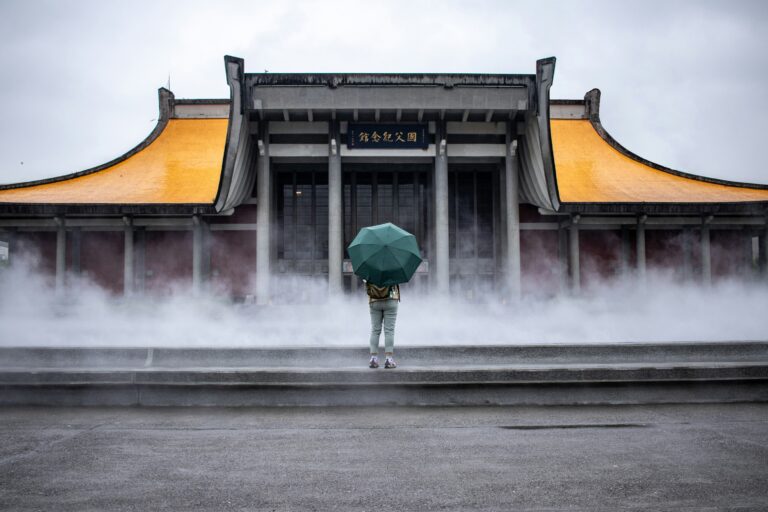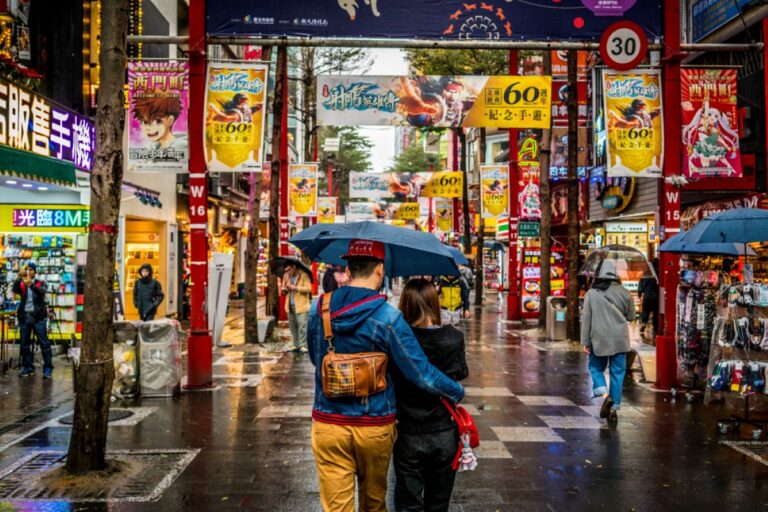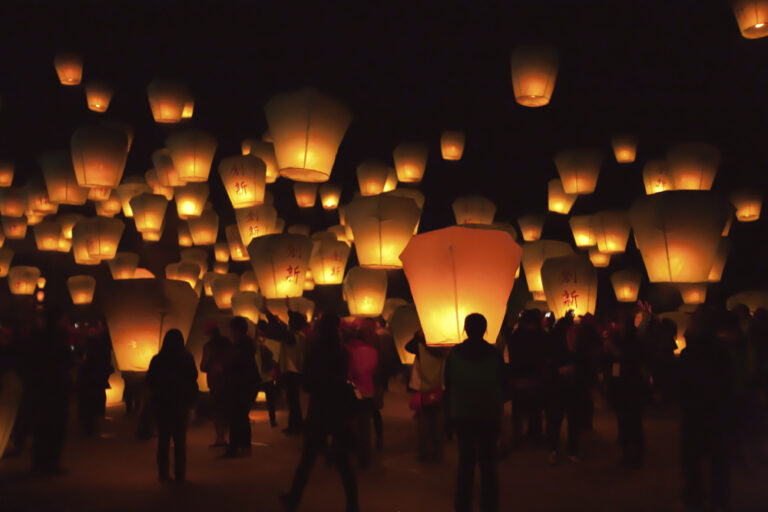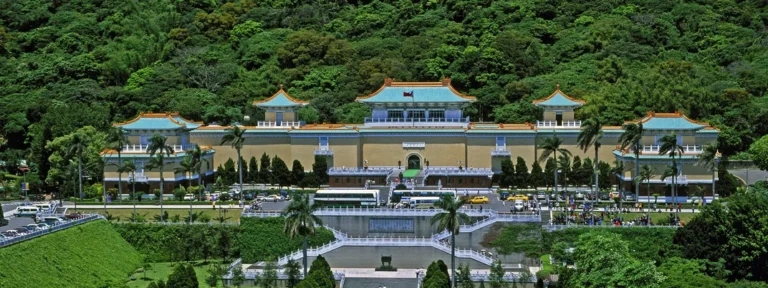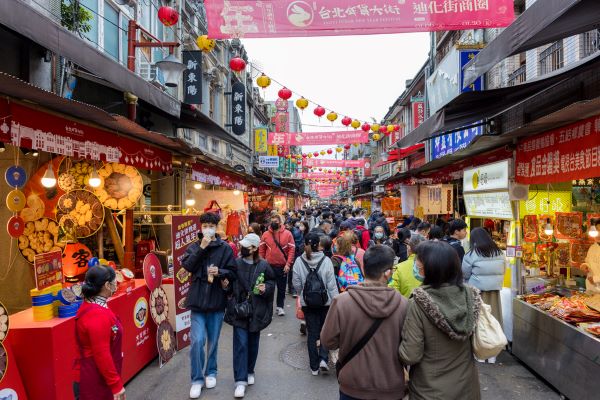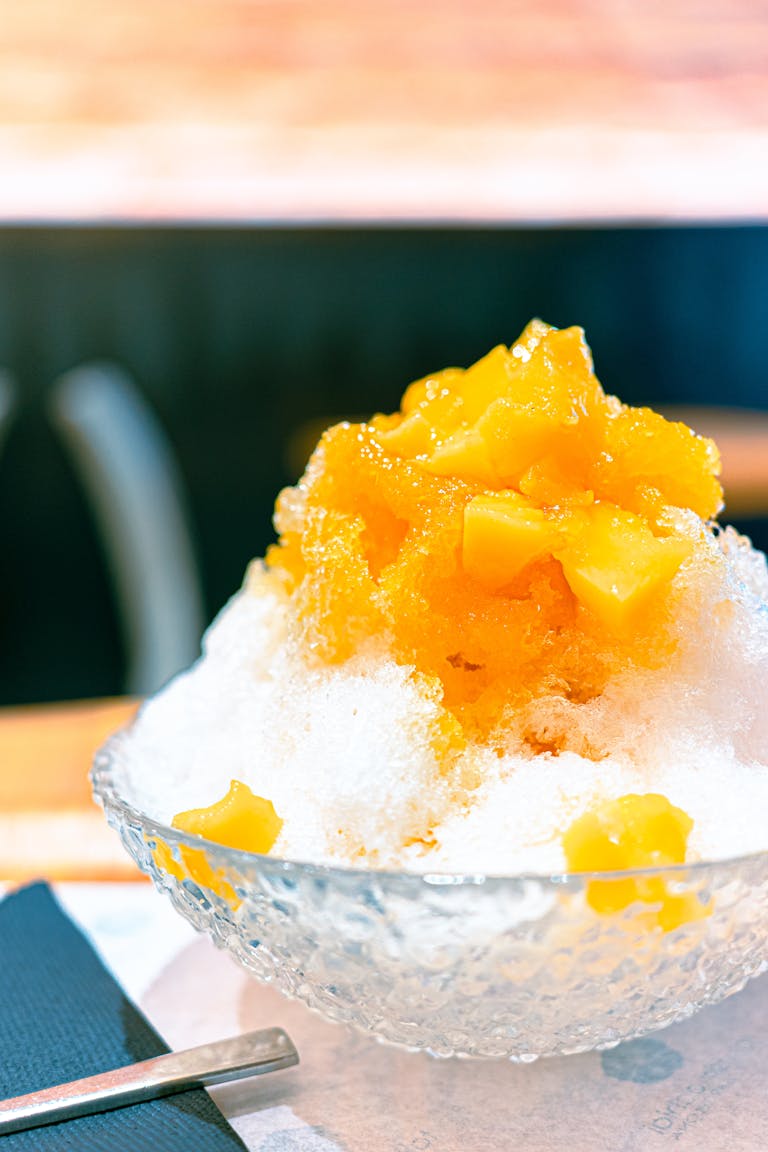How To Spend A Day in Tamsui: Old Street | Historical Architectures | Fisherman’s Wharf (淡水)
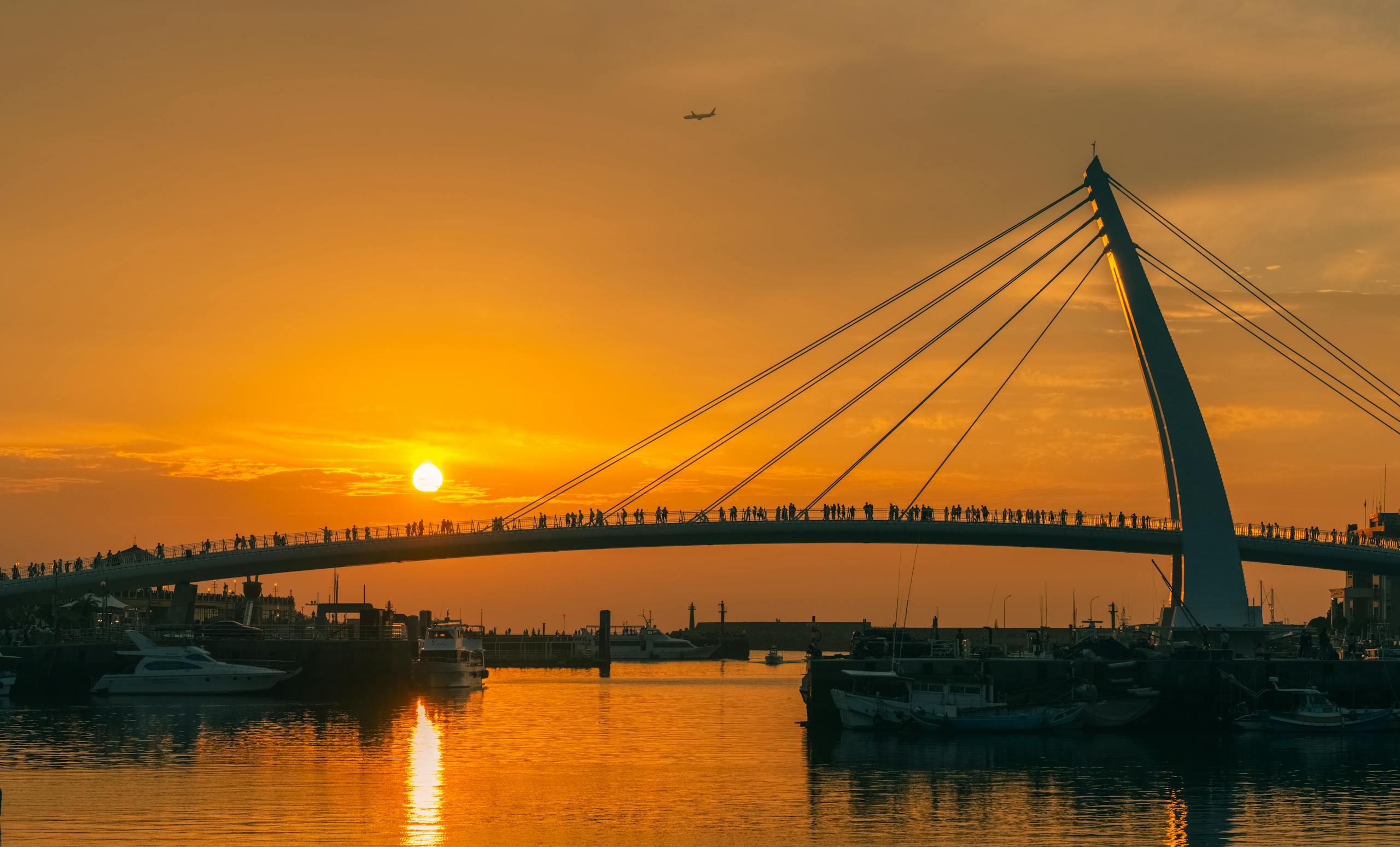
In this post, I’ll walk you through the highlights of Tamsui, including how to get there, what to see, and where to eat—everything you need to plan your visit.
Tamsui is located at the northern tip of Taiwan, where the Tamsui River flows into the sea. It is one of the first areas in Taiwan to develop into a trading port during the colonial era.
Today, it’s a favorite day-trip destination for both locals and travelers.
With its walkable old street, colonial landmarks, and a beautiful riverside setting, Tamsui is a charming place where you can learn a little Taiwanese history, snack on delicious food, and end your day watching the sunset over the water.
A Brief History Of Tamsui
Tamsui developed into a significant trading hub because of its geographic location.
The Spanish arrived in 1626 and built Fort San Domingo (紅毛城) to control trade in the region. Not long after, the Dutch took over in 1642 and stayed for about 20 years before the area was handed over to China’s Qing Dynasty.
During the Qing Dynasty, Tamsui thrived as an international port, exporting goods like tea and camphor. But its importance started to fade during the Japanese colonial period (1895–1945), when the Japanese government shifted focus to Keelung Port just to the east.
Getting To Tamsui By MRT
Take the Tamsui-Xinyi Line (Red Line) to the Tamsui Station (淡水站 R28), which is the last stop on the line. The ride from Taipei Main Station takes about 40 minutes.
Most of the main attractions are within walking distance of the Tamsui MRT station. Few can be reached by a short bus/cab/uber ride or even a ferry ride. I will explain later in the post.
Best Things To Do in Tamsui
1. Tamsui Riverside Promenade (淡水河岸步道)
As you step out of the Tamsui MRT Station’s Exit 1, you’ll see the beautiful riverside promenade right in front of you.
This wide, paved path runs alongside the Tamsui River and is perfect for a slow walk, people-watching, or just enjoying the view. You’ll see locals riding bikes, walking their dogs, or simply sitting on benches to catch the breeze. In the evening, it’s also one of the best spots to watch the sunset.
There are also a few food stalls and snack shops along the walkway, so you can grab something to eat while you enjoy the scenery. If you want a peaceful moment before diving into the busier parts of Tamsui, this is the perfect place to start your visit.
2. Tamsui Old Street (淡水老街)
Parallel to the riverside promenade is the more traditional side of Tamsui, lined with shops, food stalls, and full of old-town charm.
As you stroll through the old street, you’ll come across plenty of street food. Here are a few classics that Tamsui is famous for:
Must-Try Snacks
- A-gei (阿給): fried tofu stuffed with noodles and sealed with fish paste, served in a sweet-and-savory sauce
- Fish balls (魚丸): especially the handmade ones with meat filling
- Fried fish crackers (魚酥): crispy and addictive
- Traditional sponge cake (古早味蛋糕): light, fluffy, and just sweet enough
Over the years, I’ve tried many of the stalls and small eateries here. Honestly, the competition is fierce, so most places are pretty good. A lot of them display photos of celebrities who’ve visited, but I usually just go for whatever smells good or has a line. I’ve rarely been disappointed.
3. Fort San Domingo (紅毛城)
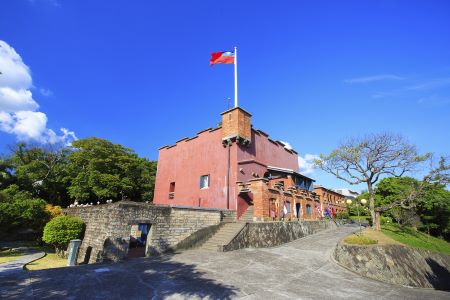
Link to Google Maps.
The original structure was built by the Spanish in 1629 to protect their trade interests. After they were pushed out by the Dutch in 1642, the fort was rebuilt and used for another 20 years.
Over the centuries, it passed through different hands—including the Qing Dynasty and later the British, who used it as a consulate.
Today, Fort San Domingo is a museum where you can explore Taiwan’s early international ties. Inside, you’ll see exhibits from different colonial periods and learn how Tamsui fit into global trade at the time.
The fort is perched on a small hill, giving you a fantastic view of the Tamsui River and the surrounding area. It’s one of my favorite spots to pause, take in the breeze, and snap a few photos.
Admission is NT$80 and includes same-day access to three sites: Fort San Domingo, the Little White House (小白宮), and Hobe Fort (滬尾砲台). It’s a good deal if you’re planning to explore more of Tamsui’s historical side.
4. Little White House (小白宮)
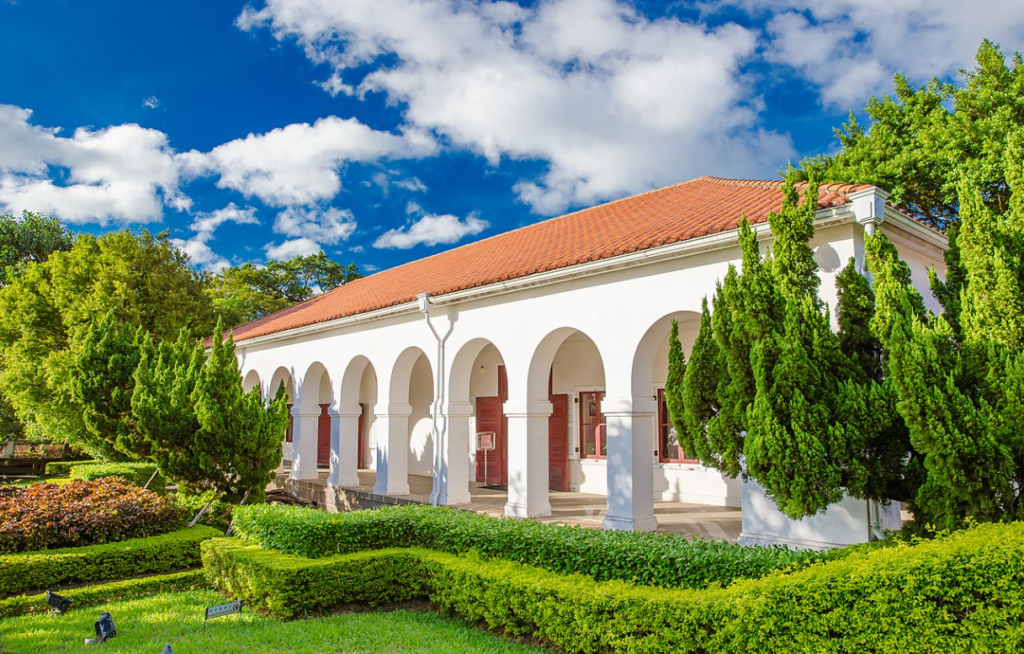
Here is the link to see the place on Google Maps.
Just a few minutes’ walk from Fort San Domingo is the Little White House, officially known as the Tamsui Customs Officer’s Residence.
This colonial-style building was constructed during the Qing Dynasty in the mid-1800s, back when Tamsui was an important port for international trade. The white exterior, tall arched corridors, and spacious veranda reflect Western architectural influences from that era. It’s easy to see why people like to take photos here—the building feels a little different from what you usually see in Taiwan.
You won’t find a ton of exhibits inside, but it’s still worth stopping by for the peaceful atmosphere and the lovely views of the river. The arched windows frame the scenery beautifully.
Admission is included with your ticket to Fort San Domingo, so you can visit both places in one trip.
5. Tamsui Longshan Temple (淡水龍山寺)
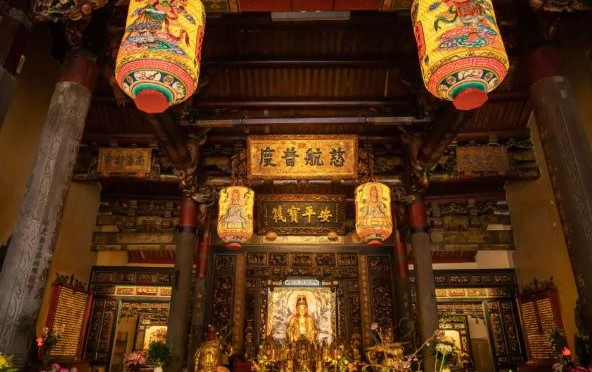
See it on Google Maps.
Hidden in the alleys near Old Street, Tamsui Longshan Temple is one of the oldest temples in the area, built in 1858 during the Qing Dynasty.
It’s dedicated to Guanyin, the Goddess of Mercy, and is still an active place of worship for locals. While the temple was originally larger—with a garden and courtyard—what remains today still carries a quiet, dignified charm. You’ll notice the traditional architecture, detailed wood carvings, and stone plaques as you step inside.
One of the plaques tells a local story: during the Sino-French War in 1884, locals believed that Guanyin protected the town from destruction. That’s why this temple holds such historical and cultural significance.
Even if you’re not religious, it’s worth stopping by to take in the peaceful atmosphere and see how history is preserved in a space still used daily.
6. Tamsui Presbyterian Church (淡水長老教會)
See it on Google Maps.
Tamsui Presbyterian Church is another historic landmark that ties into Taiwan’s early modern history.
This was the first place Canadian missionary Dr. George Leslie Mackay set up when he arrived in Taiwan in 1872. You might recognize his name from Mackay Memorial Hospital in Taipei—he’s one of the most well-known foreigners in Taiwan’s history.
Dr. Mackay wasn’t just a preacher. He was a doctor, educator, and someone who really impacted the local community. From this church, he started offering medical care, building schools, and introducing Western education to the area.
The church is still in use today and has a simple but elegant design. It’s not a large building, but standing there gives you a sense of how much influence one person had on the history of Tamsui and Taiwan.

7. Former residence of Tada Eikichi (多田榮吉故居)
See it on Google Maps.
About 400 meters from the Tamsui Presbyterian Church, halfway up the hill on the opposite side of Wenhua Road, you’ll find this beautifully preserved Japanese-style home.
Tada Eikichi was a businessman and local official during the Japanese colonial period. Unlike many in his position, he was known for his commitment to public service and improving the community.
The house is open to the public for free. Step inside and you’ll see traditional Japanese wooden architecture, sliding doors, and a calm, peaceful garden setting. It also has a nice view overlooking the Tamsui River, making it a great spot for photos.
Even though it’s not as well-known as the other sites, it’s worth visiting if you want to get a feel for the Japanese influence on Taiwan’s history.
8. Fisherman’s Wharf (淡水漁人碼頭)

See it on Google Maps.
Fisherman’s Wharf is one of the best places in northern Taiwan to watch the sunset. As the sun dips into the sea, the sky glows with shades of orange, pink, and purple—it’s absolutely stunning.
I visited on a summer evening in 2022 with my mom and son. We stood on Lover’s Bridge and watched the sky change color together. The photo I took didn’t do it justice, but the memory is one of my favorites.
As night falls, the white bridge lights up and creates a magical atmosphere. It’s a great place to end your day in Tamsui.
If you’re hungry, you have a couple of options. You can cross the bridge to the tourist fish market, where vendors sell fresh seafood and cook it on the spot. Or you can grab dinner at one of the casual cafés along the dockside wooden boardwalk.
Just keep in mind that Fisherman’s Wharf is about 4 kilometers from the Tamsui MRT station, or 3 kilometers from Fort San Domingo. It’s best to take a cab or a short bus ride if you don’t feel like walking.
If you’re visiting on a weekend, you can also take a ferry from Tamsui Wharf. I haven’t tried it myself, but it looks like a fun and scenic way to get there.
Want to stay the night in Tamsui? The nearby Fullon Hotel Tamsui Fisherman’s Wharf (福容大飯店)is a 5-star option with river views.
Final Thoughts
Tamsui offers a unique blend of history, culture, and natural beauty that makes it a perfect day trip for anyone visiting Taipei.
Whether you’re strolling through the lively Old Street, trying the local snacks, or exploring the temples and historical sites, Tamsui invites you to step back in time and enjoy its charm.
I hope this article is helpful to you!
